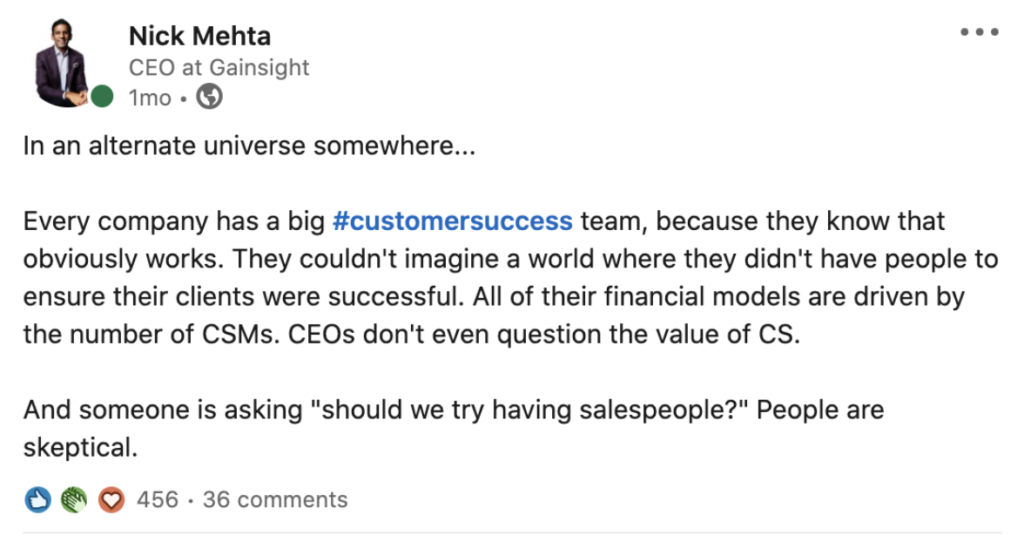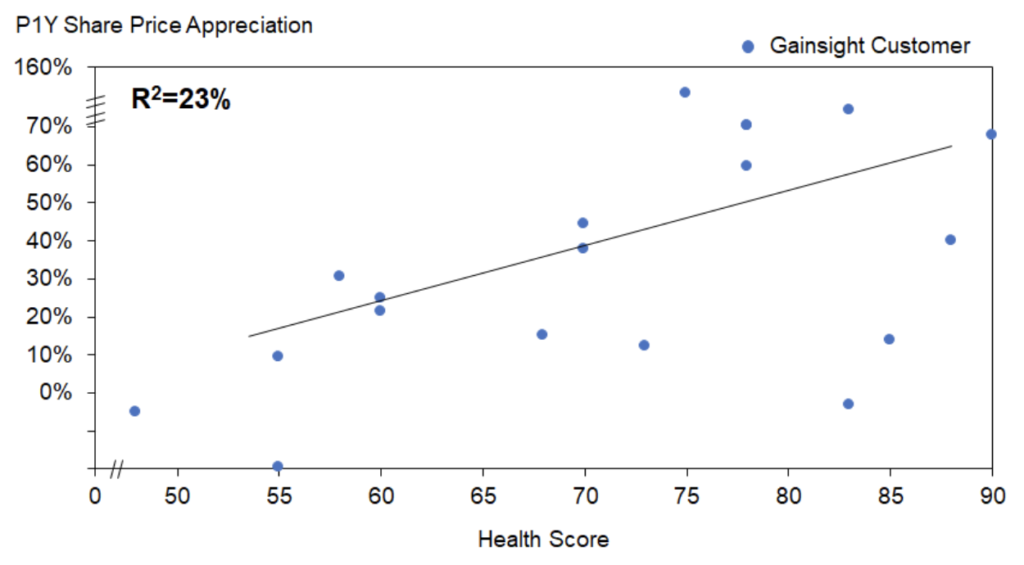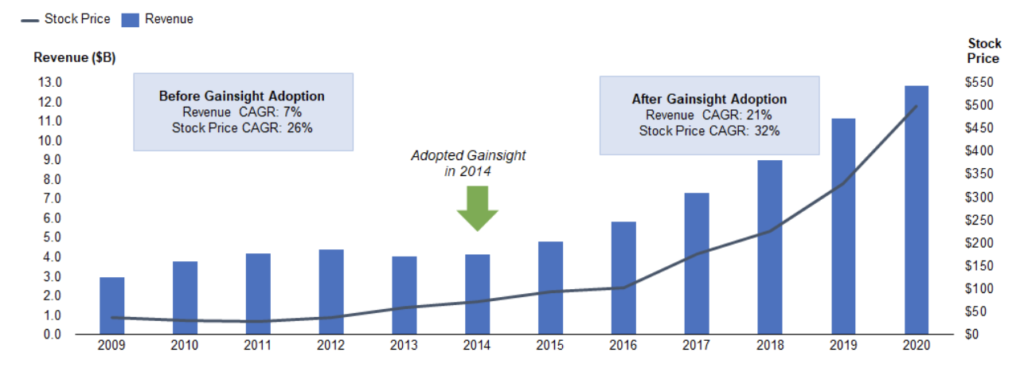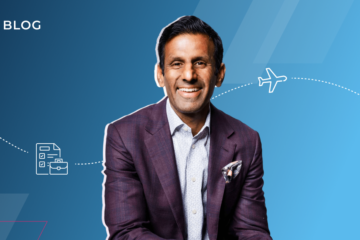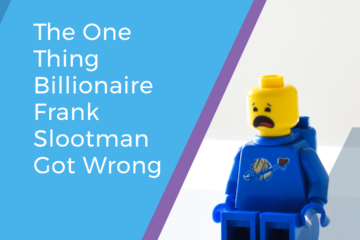Gainsight Clients Have Higher Growth Rates, Net Retention and Valuation Multiples

Co-Written by An Yan, MBA Candidate at Stanford Graduate School of Business
“What’s the ROI of Customer Success?” This is a question I hear all the time in the Customer Success community. Since CS is still a relatively-young profession, we still own the burden of proof. Of course, my mind often drifts to a thought experiment…
At Gainsight, we have a lens by which to answer this question. Nearly every company in SaaS is “checking the box” on Customer Success in some way. But we can see the businesses that are truly operationalizing CS across their companies.
As such, I enlisted the help of An Yan, whom I met while helping to teach a day on Customer Success at Stanford’s Graduate School of Business. An did some incredible analysis to answer four questions:
- How does Customer Success and Gainsight usage correlate to revenue growth and share price appreciation?
- How does Customer Success and Gainsight usage correlate to Net Revenue Retention?
- How does the sophistication of Customer Success and Gainsight usage correlate to faster growth?
- How does Customer Success and Gainsight usage get a company ready to go public?
So let’s dive in!
1. Gainsight Clients Grow Faster Than Their Peers
Let’s first look at companies on the Bessemer Venture Partners’ Cloud Index who are not using Gainsight products. Out of 33 such companies, we analyzed the 21 of them with at least three years of publicly available financial data. This group of companies grew revenue at 32% and share price at 30% in the last twelve months.
How does that compare to Cloud Index constituent companies who use Gainsight to power their Customer Success organizations? Let’s take a close look at 20 of our customers included in the index who have been using Gainsight for at least a year. On average, our clients grew revenue at a compounded annual rate of 40% after adopting Gainsight, expanded their EV/Sales multiples by 1.49x on average and enjoyed annualized share price increase of ~45%. By leveraging Gainsight’s technology, library of best practices and thought leadership to enable their Customer Success teams, our customers delivered even more brilliant performance than their peers on the Cloud Index.
Figure 1: Performance Comparison: Gainsight Customers vs Non-Gainsight Customers on the Cloud Index
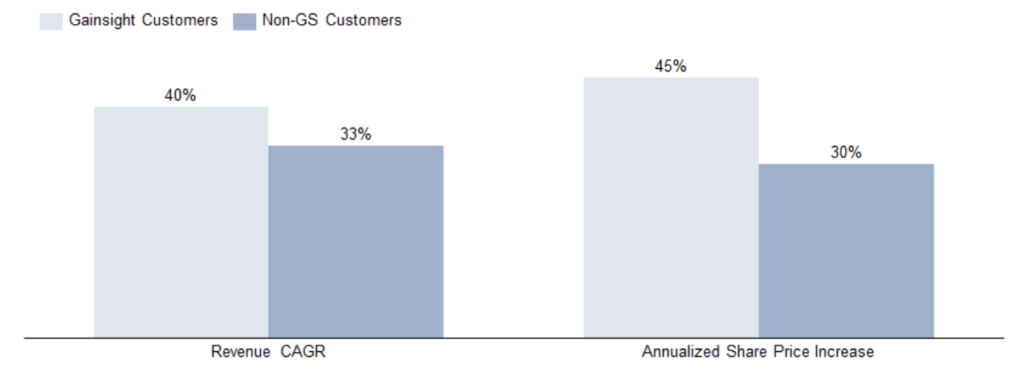
2. Gainsight Clients Have Higher Net Retention Rates Than Their Peers
Net Retention Rate is a key metric that investors use to evaluate SaaS companies. We analyzed the NRR of 36 BVP Cloud Index constituent companies who disclose this metric in their SEC filings. We found that Gainsight usage explains 13% of the variation in their NRR. Gainsight customers on the index have an average NRR of 117%, 10% higher than non-Gainsight customers’ average of 107%.
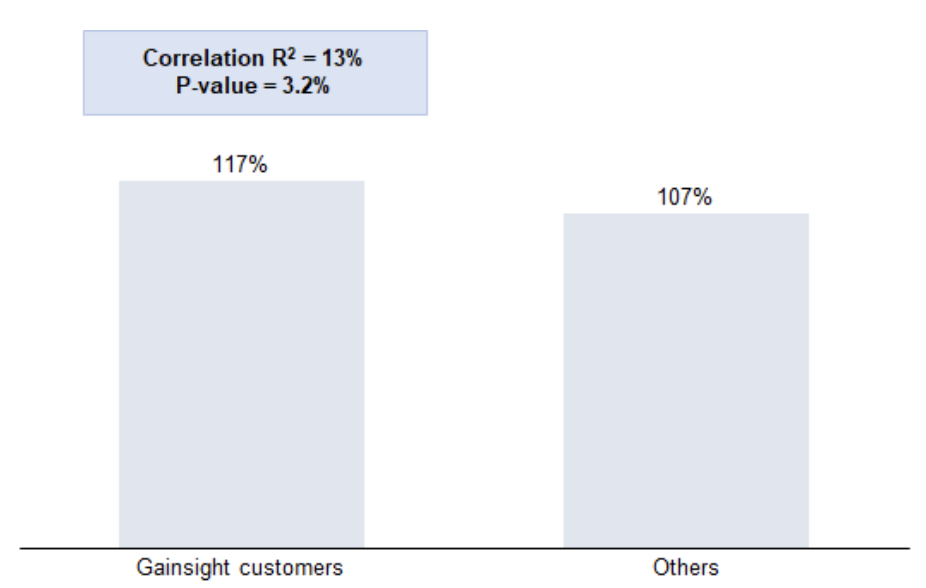
3. Active Users of Gainsight Grow Faster Than Less Active Users
So how does the level of Customer Success engagement impact our customers’ performance? To answer this, we first need to find a way to measure their CS engagement.
At Gainsight, we use a proprietary “Health Score” to comprehensively evaluate customers’ depth and breadth of Gainsight product usage, ROI, and customer experience. We will use these Health Scores as a proxy for their level of Customer Success engagement.
In the graphs below, we plotted each client’s Health Score against their annualized share price increase since adopting Gainsight. Our data shows a positive correlation between the Health Score and our customer’s price performance in the last twelve months. Variation in the Health Score explains ~23% of variation in their share price increase in the last twelve months.
In total, these 20 customers grew their market capitalization by $285 billion in the last twelve months. With a regression coefficient of 1.64%, every one point of increase in Health Score is correlated with 164bps of increase in share price. For a $5B market capitalization company, this translates into $80 million of additional shareholder value.
To make the comparison even clearer, we also divided these 20 customers into High Health Score and Low Health Score groups. Customers with high Health Scores achieved average annualized share price appreciation of 51% since Gainsight adoption, whereas customers with low Health Scores only saw 35% annualized share price gain.
Annualized Share Price Appreciation Since Gainsight Adoption (High Health Score Customers vs Low Health Score Customers)
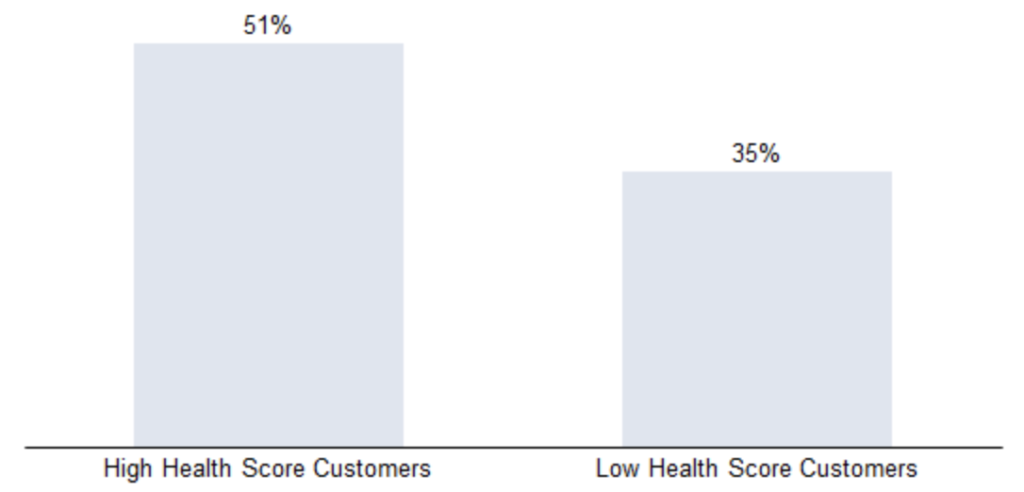
4. Example: Gainsight Client Accelerates Revenue Growth from 7% to 21% After Implementing Gainsight
Since 2015, we’ve had 18 customers go public after adopting our products. Today, they have a combined market capitalization of $290 billion. On average, these customers went public within 2.3 years of Gainsight adoption. Their successes are clearly well recognized by the capital markets.
We do this magic by helping our customers achieve tangible performance improvements. As an example, Gainsight onboarded Customer A in 2014. Since then, their share price grew more than 7-fold (32% CAGR) from $68.6 to $504.6 today, with EV/Sales multiple expanding from 6.6x to 16.4x and revenue growing at 21% CAGR. Impressive, right? It wasn’t that rosy before. In the 5 years prior to adopting Gainsight, Customer A’s revenue and share price grew at annualized rates of merely 7% and 26%, respectively.
Customer A Share Price and Revenue Growth, Before & After Gainsight Adoption
The net of all of this analysis is simple. EVERY company has adopted Customer Success as a buzzword. But the firms that take Customer Success seriously and operationalize it across their companies are driving billions of dollars in incremental shareholder value.
